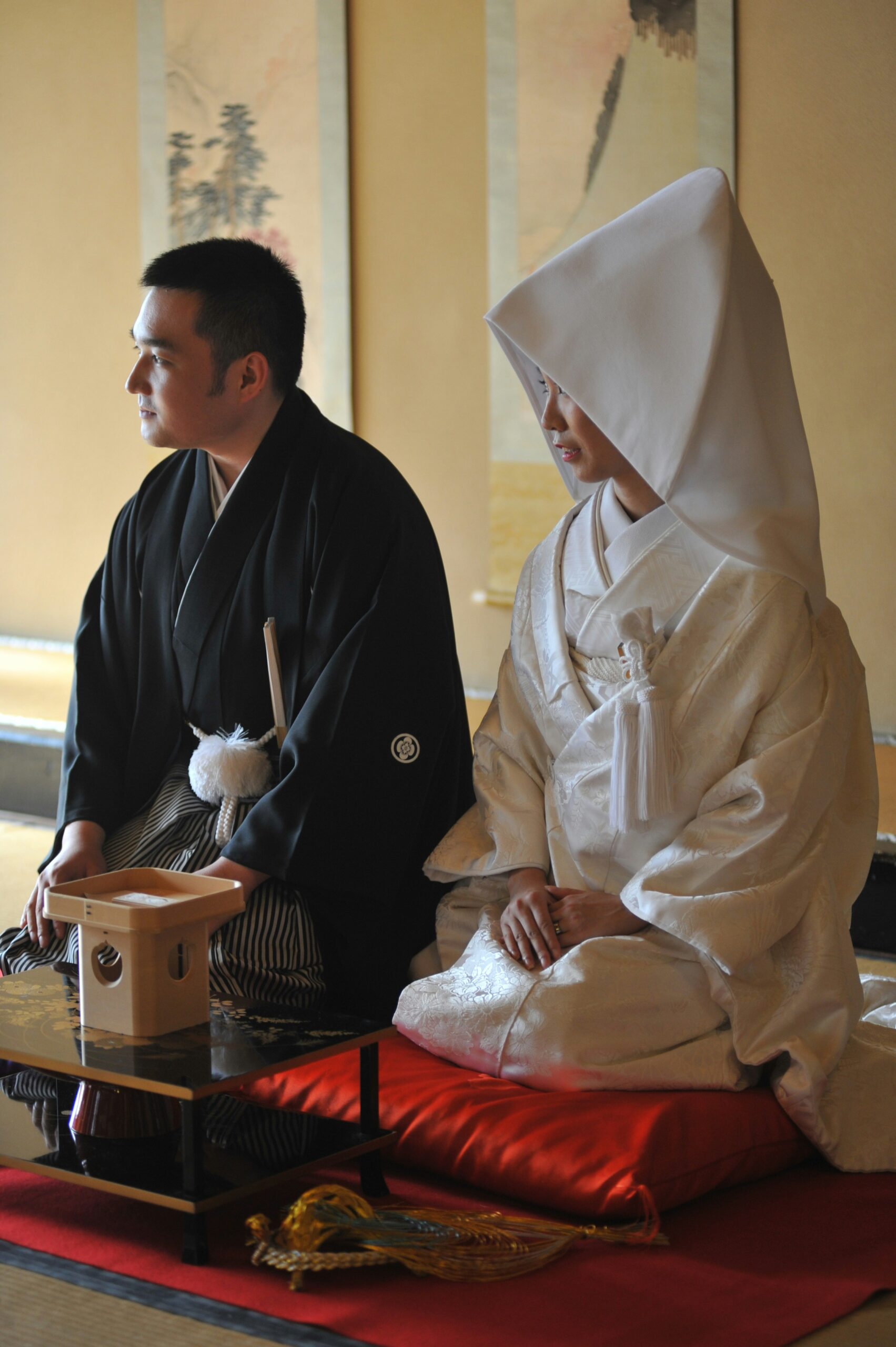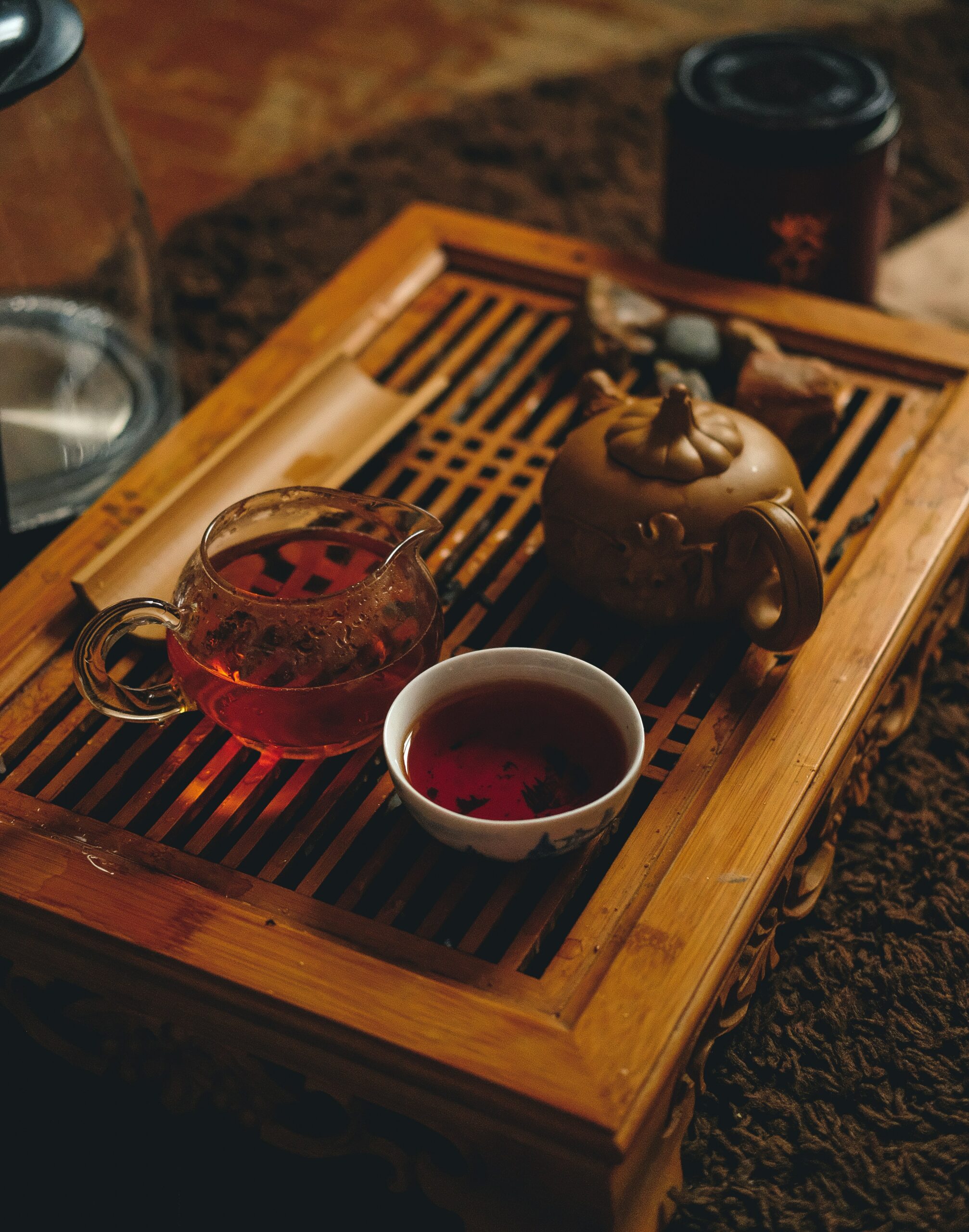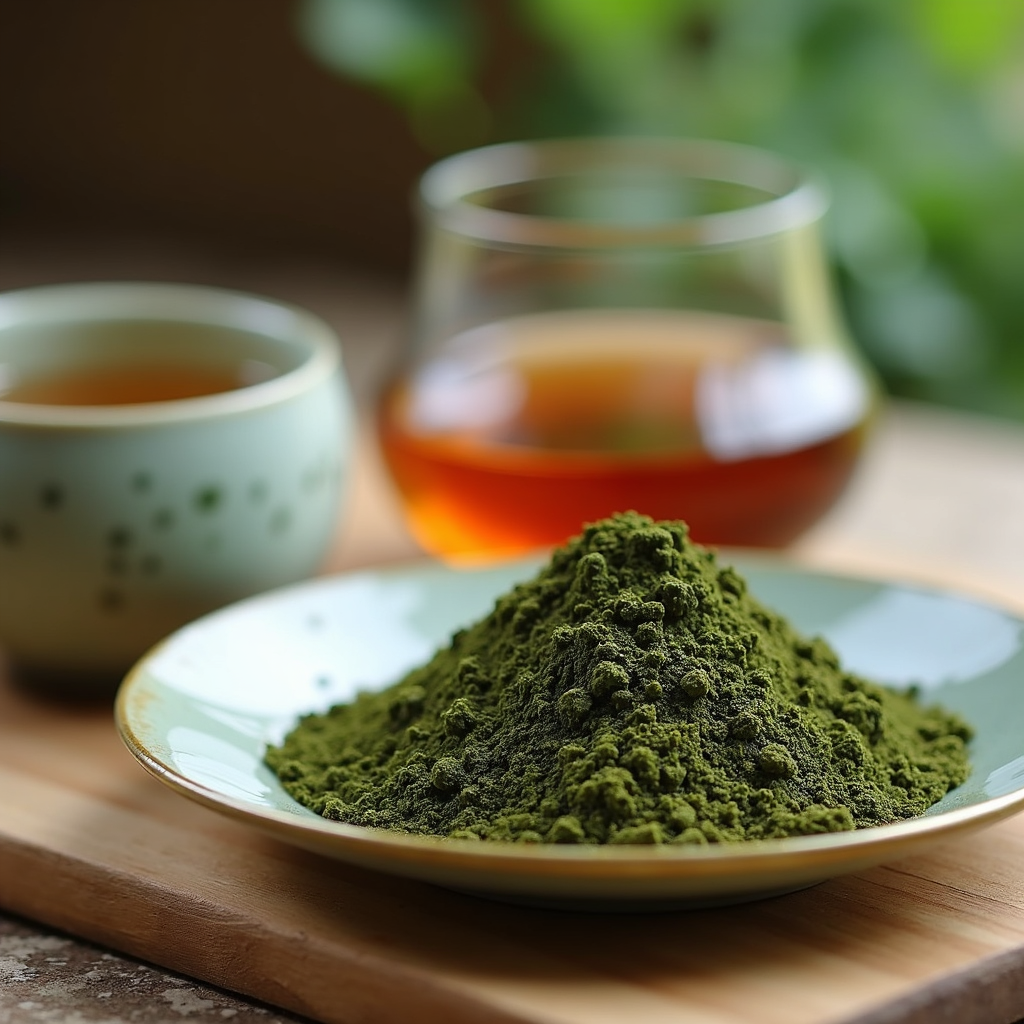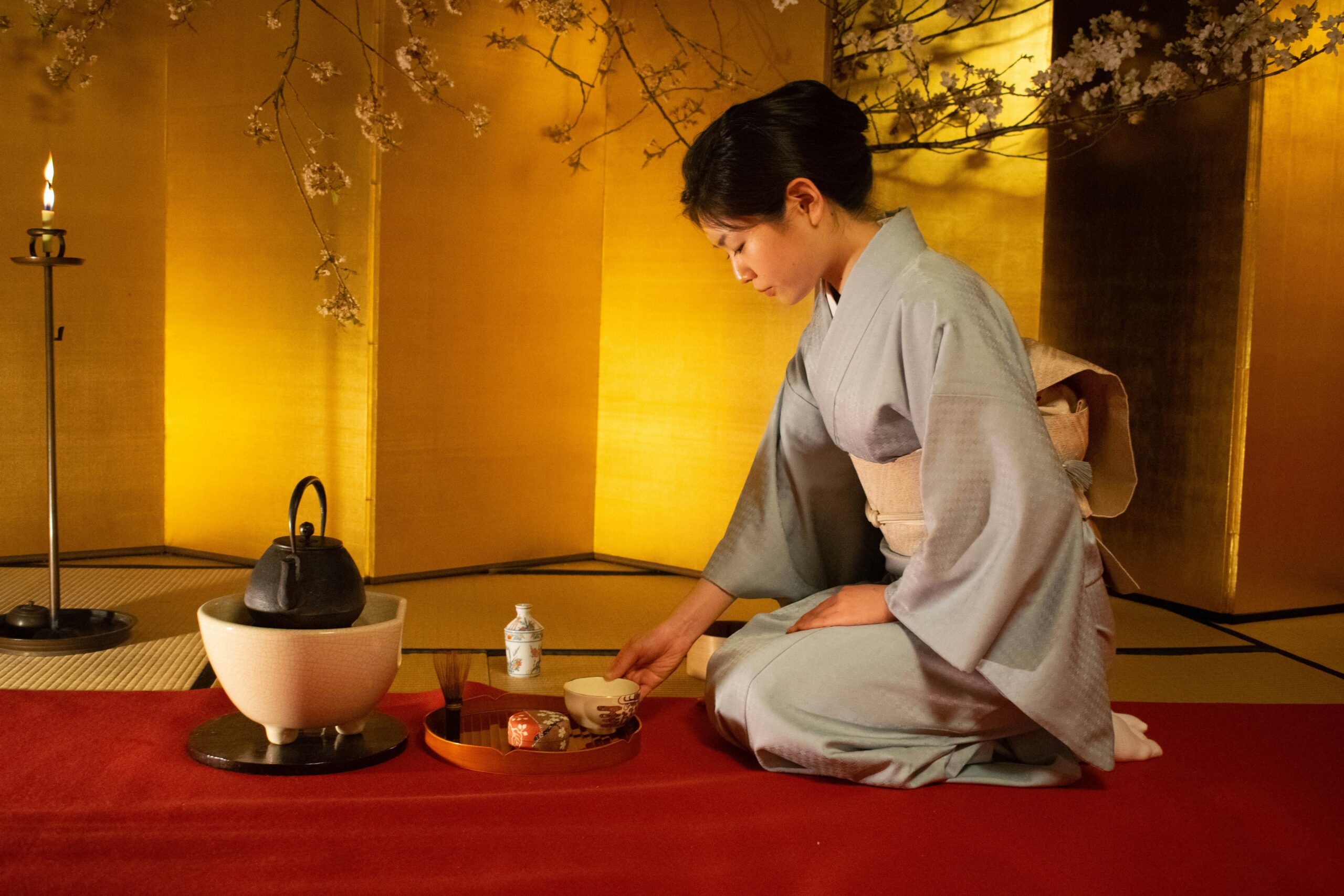Just when you think a simple greeting or tea name like “Konnichiwa Hojicha” is straightforward, you discover layers of meaning that connect culture, health, and tradition. In this post, you’ll explore how this Japanese phrase and the hojicha tea it represents offer more than a typical beverage experience—highlighting the benefits of health in a smooth, flowing form. You’ll gain insight into the origins, preparation, and wellness potential of hojicha, enhancing your appreciation for this comforting drink beyond its simple name.
Key Takeaways:
- “Konnichiwa Hojicha?” explores the complexity of incorporating Japanese language and culture into simple health-related expressions.
- The phrase highlights how traditional Japanese elements can add depth and nuance beyond basic health terminology.
- It reflects the cultural significance of hojicha, a roasted green tea, emphasizing its role in well-being in Japan.
- The discussion showcases the challenge of balancing linguistic authenticity with clarity when communicating health concepts.
- This example illustrates how language and culture intertwine, making straightforward ideas richer and more meaningful.
The Cultural Roots of Hojicha
Hojicha transcends mere beverage status in Japan; it embodies the fusion of tradition and daily life. This roasted green tea, distinct from its steamed counterparts, originates from specific cultural practices that emphasize simplicity and seasonality. As you explore deeper, you find that Hojicha reflects a unique regional identity and a preference for an approachable yet complex flavor. This isn’t just about drinking tea; it’s about experiencing a ritual that resonates with historical customs and personal well-being intertwined in Japanese culture.
Historical Origins of Hojicha
The emergence of Hojicha dates back to the 1920s in Kyoto when tea merchants began roasting leftover tea leaves to reduce waste and create a milder flavor for evening consumption. This technique shifted conventional tea processing by applying high-temperature roasting, which altered the chemical compounds while offering a lower caffeine content. You might find it fascinating that this innovation was partly driven by practical needs and eventually became a favored tea variety, especially among children and the elderly who preferred its gentle aroma and digestibility.
The Role of Tea in Japanese Society
Tea in Japan functions beyond refreshment; it is a cultural vehicle for hospitality, meditation, and artistic expression. You may witness tea ceremonies where every gesture follows centuries-old prescriptions illustrating harmony, respect, purity, and tranquility. Green tea varieties like matcha and sencha dominate many social and religious occasions, yet Hojicha often serves as a comforting daily alternative, emphasizing relaxation and digestive benefits. Your experience of Japanese tea culture broadens when you recognize these nuanced uses and symbolic meanings.
Digging deeper into tea’s societal role reveals its integration into health practices and seasonal rituals. For instance, tea gatherings forge social bonds and foster mindfulness, where participants focus on the moment through brewing and savoring. Commercially, tea cultivates regional economies while influencing art and literature, symbolizing life’s ephemeral beauty. You’ll often find that tea, including Hojicha, acts as a cultural touchstone linking generations with shared values and tastes in Japan.

Decoding the Hojicha Experience
You’ll find Hojicha distinctively unique among green teas, mainly because it’s roasted rather than steamed. This roasting process at high temperatures brings out a toasted, nutty aroma and reduces the tea’s bitterness and caffeine content significantly. The infusion turns a warm amber hue, contrasting the vibrant green typical of matcha or sencha, inviting you to savor a more mellow, comforting tea that’s easy on the palate, especially in the evening or for sensitive tea drinkers.
Flavor Profiles and Brewing Techniques
Hojicha’s flavor leans towards caramelized, smoky notes with a subtle sweetness. Brewing works best with water temperatures around 80–90°C (176–194°F) and steeping times of 30 seconds to 1 minute, optimizing its gentle taste without bitterness. You can adjust these parameters to make the tea lighter or stronger, which highlights its versatility as a relaxing casual drink or a refined component in tea blends or desserts.
Health Benefits of Hojicha Compared to Other Teas
Lower caffeine levels in Hojicha, typically around 7 mg per cup compared to 20-40 mg in regular green teas, make it a friendly choice for those avoiding stimulants. The roasting also breaks down catechins but increases antioxidants such as melanoidins. This means you get a tea that supports digestion and reduces oxidative stress while offering a gentler boost that doesn’t disrupt sleep cycles.
Health Benefits Comparison
| Aspect | Hojicha |
|---|---|
| Caffeine Content | ~7 mg per cup |
| Antioxidants | Rich in melanoidins, moderate catechins |
| Effect on Digestion | Soothing, helps reduce acidity |
| Suitability for Evenings | Excellent, low stimulant impact |
| Common Applications | Relaxation, digestive aid, mild antioxidant support |
Beyond caffeine moderation, melanoidins formed during roasting in Hojicha contribute unique antioxidant properties not found in unroasted teas. These compounds have shown potential in anti-inflammatory effects and balancing gut bacteria, offering you additional health layers. If you struggle with acidic teas causing stomach discomfort, Hojicha’s gentle nature provides a soothing alternative that supports well-being without compromising flavor.
Hojicha and Modern Wellness Trends
The rising interest in antioxidant-rich beverages has propelled hojicha into the spotlight within wellness circles. Its low caffeine content and roasted flavor offer a unique alternative to conventional teas, aligning with trends favoring calming yet healthful drinks. Wellness enthusiasts often pair hojicha with mindfulness practices or as part of a balanced diet, appreciating its grounding aroma and potential digestive benefits. Integrating hojicha taps into the broader movement toward plant-based, natural remedies, appealing to those seeking both tradition and contemporary health advantages.
Hojicha in the Context of Holistic Health
Hojicha complements holistic health approaches by providing calming effects without overwhelming stimulation, making it ideal for stress management. Its mineral content, including manganese and potassium, supports bodily functions alongside antioxidant polyphenols that promote cellular health. You may find hojicha helpful in evening routines, as its gentle nature supports restful sleep and digestion, aligning well with both physical and mental wellness goals.
Integrating Hojicha into Daily Routines
Adding hojicha to your daily routine can be as simple as swapping your afternoon coffee for a cup of this roasted tea, which delivers a mellow flavor and milder caffeine impact. Many incorporate hojicha into morning rituals, using it to hydrate and gently energize without jitteriness. Its versatility extends to culinary uses, such as hojicha lattes or desserts, allowing you to enjoy its healthful properties in diverse, enjoyable ways.
Building hojicha into your daily habits encourages consistency in wellness practices. For example, brewing hojicha mid-morning can serve as a mindful pause during work, while a warm cup in the evening promotes relaxation before bed. Experiment with brewing times and concentrations to tailor both taste and caffeine levels, transforming simple consumption into a personalized health ritual that supports your lifestyle and wellness aspirations.
Hojicha: Bridging Tradition and Innovation
You’ll notice hojicha effortlessly balances its deep-rooted heritage with a fresh wave of creativity in how it’s enjoyed today. This roasted green tea, prized since the 1920s in Japan, has evolved from a simple homebrew to a versatile ingredient that blends old tea-making artistry with modern tastes. Its mild, nutty flavor serves as a canvas for innovation, making it a bridge that connects your appreciation for tradition with your curiosity for new culinary experiences.

Innovative Uses in Contemporary Cuisine
Chefs and home cooks alike are incorporating hojicha into desserts, smoothies, and even savory dishes to add a smoky warmth without overwhelming bitterness. You might encounter hojicha-flavored ice cream, cakes infused with its subtle roasted notes, or broths that borrow from its toasty aroma. This flexibility makes it easy for you to explore beyond the teacup, turning hojicha into a multi-sensory ingredient that complements your adventurous palate.
The Global Popularity Surge of Hojicha
The rise in hojicha’s global presence owes much to shifting tastes toward healthier and less caffeinated alternatives, combined with a growing fascination for authentic Japanese flavors. From New York trendy cafés to European boutique tea shops, hojicha has gained a dedicated following among enthusiasts seeking its distinct roasted character and versatility. Your next coffee shop visit might present you with a hojicha latte, a testament to its expanding international status.
Further illustrating its popularity, hojicha has become a staple in fusion drinks and wellness products, with sales in overseas markets growing by over 30% annually since 2018. This momentum highlights how consumers value not only its unique taste but also its digestive ease compared to traditional green teas. As you sample various hojicha-inspired creations abroad or online, you join a worldwide community embracing this flavorful, health-conscious choice.
Navigating Consumer Choices in the Hojicha Market
As you explore hojicha options, noticing packaging details can guide your choices. Japanese hojicha often highlights the roast level and leaf grade, important for flavor and health benefits. Beware of blends labeled simply as “roasted tea,” as they may mix hojicha with lower-quality leaves or additives. Your palate and wallet benefit from spotting authentic hojicha that balances a toasty aroma with smoothness, usually sourced from regions like Uji or Shizuoka. Scanning for certifications or origin details on packaging can also steer you toward trusted products amid a growing market flooded with varied quality offerings.
Quality Indicators: From Leaf to Cup
Examining leaf appearance provides immediate clues about hojicha quality; vibrant, uniform leaves indicate fresh, well-roasted tea free from excessive stems or dust. You might notice a reddish-brown hue, signaling proper roasting that develops hojicha’s signature nutty flavor without bitterness. High-grade hojicha often uses younger leaves or first flush harvests roasted at controlled temperatures, preserving antioxidant activity and aroma. Once brewed, a clear, amber infusion with a mild but distinct roasted scent confirms a superior cup ready to deliver both taste and health benefits worth your attention.
Ethical and Environmental Considerations in Sourcing
Tracking hojicha’s origin helps you gauge ethical sourcing practices, which significantly impact both environmental sustainability and community welfare. Municipalities like Kyoto emphasize traditional cultivation methods minimizing pesticide use, aligning with organic certification trends. Many specialty producers collaborate with small farmers practicing shade-grown cultivation that supports biodiversity and soil health. Selecting hojicha from these responsible sources ensures your tea experience doesn’t fuel harmful labor practices or ecological degradation, aligning your health choices with global sustainability efforts.
Diving deeper, some Japanese tea cooperatives invest in social programs for workers and adopt water recycling during roasting to lower environmental footprints. These initiatives not only preserve the tea-growing heritage but also address climate challenges affecting harvest consistency. You’ll find brands marketing hojicha with clear CSR (Corporate Social Responsibility) commitments, providing transparency through third-party audits or fair-trade certification. By choosing such options, you contribute to a supply chain that values ethical labor conditions and cultivates long-term ecosystem balance, making every sip of your hojicha a mindful act.

To wrap up
The phrase “Konnichiwa Hojicha? Too much Japanese for a simple word Health in flowing form?” invites you to explore the rich cultural layers behind language and well-being. When you encounter such expressions, you gain insight into how language shapes your understanding of health and tradition in Japan. Embracing these nuances empowers you to appreciate the simplicity and depth Japanese holds in everyday words, enriching your health journey with new perspectives that flow naturally from language to lifestyle.
FAQ
Q: What does “Konnichiwa Hojicha?” mean in the context of Japanese tea?
A: “Konnichiwa” means “hello” or “good afternoon” in Japanese, while “Hojicha” is a type of roasted green tea from Japan. When combined, the phrase can be understood as a friendly greeting related to hojicha tea, often used to introduce or highlight this familiar and comforting beverage in a culturally respectful way.
Q: Why might “Konnichiwa Hojicha?” be considered too much Japanese for a simple concept like “Health”?
A: The phrase includes two distinctly Japanese terms that carry cultural significance, which might feel overwhelming for those unfamiliar with the language. Using such a phrase to express a broad idea like “health” could be seen as making the concept more complex than necessary, since “health” is a universal concept that can be conveyed with simpler or more direct language.
Q: How is hojicha associated with health benefits?
A: Hojicha is known for its low caffeine content and rich antioxidants, which contribute to relaxation and overall wellbeing. Its roasting process gives it a unique flavor and reduces bitterness, making it gentle on the stomach and beneficial for digestion. These properties tie hojicha to wellness practices and health-conscious lifestyles.
Q: Can the phrase “Konnichiwa Hojicha?” be used as a creative way to promote a healthy lifestyle?
A: Yes, using culturally rich expressions like “Konnichiwa Hojicha?” can be a creative method to engage interest in healthy habits, especially when introducing traditional elements such as Japanese teas known for their calming and health-supporting qualities. This approach adds cultural depth and uniqueness to health promotion messaging.
Q: How should one approach the use of Japanese phrases like “Konnichiwa Hojicha?” in marketing or wellness contexts?
A: It is helpful to provide clear explanations and context when integrating Japanese phrases into marketing or wellness materials. Doing so ensures that the audience understands the meaning and significance behind the terms. Balancing cultural authenticity with accessibility encourages appreciation without causing confusion or alienation.

